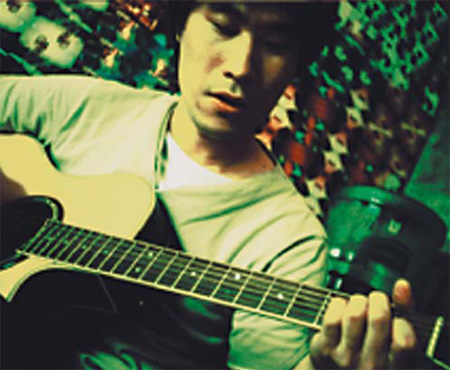
 |
|
Lomography store owner, Liu Qiang, plays guitar in his Houhai location in a photo taken with a Lomo camera. [Photo/China Daily] |
Forget digital photos. More stores in Beijing are opening up to cater to a growing market of young photographers who would rather shoot with retro cameras than high-tech ones.
The cameras are called Lomos. They come from a photographic movement known as Lomography, an analog form of photography that uses cheap, plastic cameras to achieve interesting effects.
Liu Qiang opened Beijing's first Lomography store in 2007. On Saturday, he opened a second location in Sanlitun. In November, a shop dedicated to the Holga, a model similar to the Lomo, opened on Andingmennei street.
It only takes a moment in one of the stores to be seized by the quick and candid style that characterizes Lomograph photos, or lomographs.
"The visual effect of these photos is unique, which is why it's popular among young people," Liu said. "They come across these photos and think they are interesting. When they find out what kind of camera made them, they want to own one."
Lomography originated in the Soviet Union, where a low-tech, plastic camera called Lomo Kompakt Automat was created because it was cheap to manufacture and simple to use.
Two Austrian students later discovered the camera and used its unique properties to begin a new style of experimental photography.
While some say Lomography is more a brilliant marketing scheme rather than avant-garde movement, a growing number of Beijingers are opting to buy the little, plastic camera instead of a spiffy, digital one.
When Lomography was introduced in China in 2004, it went largely unnoticed by the public, said Liu.
"The Lomography headquarters in Vienna came to China and did an exhibition with BMW at Ritan Park," he said. "But before we opened our store, you could not buy a Lomo on the Chinese mainland."
Liu was introduced to Lomos after visiting a friend in Hong Kong, who was in charge of the Lomography Asia office. "They had not yet opened a store on the mainland," he said. "But they gave me permission to open the first."
Huang Huang, owner of Beijing's first Holga store, has a similar story. The Holga Asia headquarters gave him permission to open a store in China after he visited their Hong Kong offices several years ago.
Sun Chun, a 26-year-old from Beijing, received a Holga from one of her friends as a birthday present.
"The coolest part about the camera is the size," Sun said. "I can just put it in my purse and take it with me wherever I go."
Lomo and Holga fans are usually young and learn about the cameras via online communities, said Huang.
"It depends on your age," Huang said. "It's hard for the older people to accept this trendy object, which they think of as a toy.
"For young people, they get to know the product and the concept through the Internet and buy it even before stores opened."
In addition to stores opening in China, the growing popularity of Lomography has been aided by celebrities.
Peng Tan, a national rock icon, as well as Zhou Bichang, runner-up in Supergirls competition are proud owners of Lomo cameras.
"People get attracted to them because the colors are totally different from digital colors," Huang said.
Yet for the storeowners, the appeal has little to do with celebrity endorsements.
"With the Holga, what you see and what you shoot are different. There's a kind of uncertainty, you don't know what you're going to shoot," he said. "You can still take beautiful photos as long as you have ideas, and they always give people a surprise."